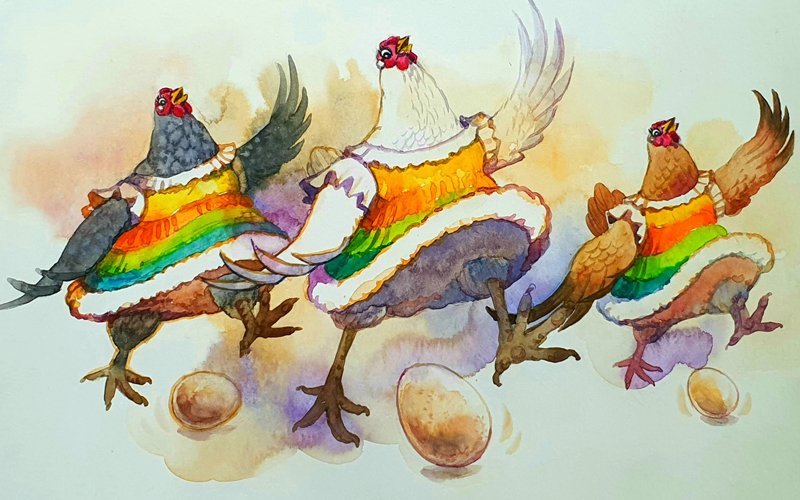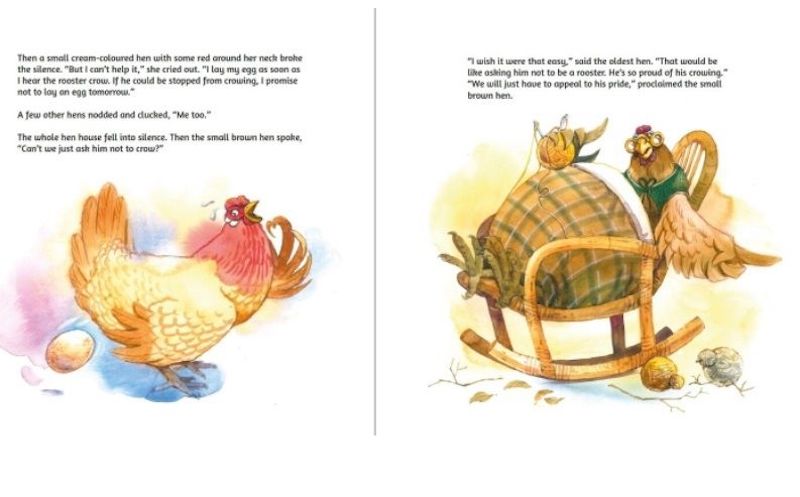
The book is written by storyteller and executive director of the Kuala Lumpur Shakespeare Players, Lim Soon Heng (Photo: Lim Soon Heng)
The hens at Mr Chan’s farm have been laying eggs daily, year after year. Finally, one hen decides that they need a much-deserved break. “Wouldn’t it be nice if we could have a holiday?” she proclaims. After a few others chime in, they hatch a plan to earn their longed-for time off — they have to find a way to convince the boastful rooster not to crow for one morning, so that they would not automatically lay an egg.
Complete with fascinating watercolour illustrations, A Hen-Made Tale is an endearing and unique children’s book by actor, storyteller and executive director of the Kuala Lumpur Shakespeare Players, Lim Soon Heng.
The rudiments of A Hen-Made Tale were formed many years ago in 1996, when Lim returned from the US after graduating with a degree in English. Finding himself with much time on his hands, he participated in writing competitions announced in newspapers while attending a year-long playwriting workshop with Five Arts Centre and DramaLab. Lim was also contributing to an English language newspaper when he started writing the book.
When the first draft of the story was completed, Lim took it to a publisher that happened to be textbook and workbook-focused. When it suggested that the book be altered into a teaching tool — by adding a vocabulary section with questions as a comprehension test — Lim turned the idea down.
“I concluded, ‘No wonder children in Malaysia, for the most part, don’t like to read.’ The pleasure of the text is drained, and it’s all about work, work, work.”
hens_made.jpeg

While the final version was still in the works, the story went public in 2005, when Lim read it at the Kuala Lumpur International Children Theatre Festival and, later, at the National Art Gallery and to children at Hospital KL.
At the Cooler Lumpur Festival, a show critic and reviewer offered to look at his script and noticed a component of feminism in his work, and its potential to be dramatised into a musical.
Having studied literature and literary criticism, Lim was very familiar with Margaret Atwood’s renowned dystopian classic, The Handmaid’s Tale, hence the “hen-made” in his title. While teaching in 1996, he noticed that most of his fellow English instructors did not read beyond the daily newspaper and magazines.
“No work of fiction. And outside of my literature classes, the students didn’t read,” explains Lim, when asked about the origin of the book. “Reading has to start early. Maybe that experience in a private local college was the impetus, but not the inspiration, for the story.”
Besides a storyline about needing a break, which resonates with many of us, another standout aspect of A Hen-Made Tale is the illustrations by Tang Yeok Khang. When Lim spread the word that he needed an artist for his book, many applied with samples of their works. Tang drew what he envisioned an illustration for the story would look like, given the synopsis. Lim immediately went along with his drawings.
“I shared with him that his illustrations should do more than tell my words in pictures. They should also unfold a complementary story, but not another story. I love the humour in his visual expressions,” says Lim.
inside.jpeg

In his simple yet vibrant works, Tang successfully brings to life Lim’s description of every character and event, weaving in elements of human characteristics that somehow add a distinctive touch to the book.
Although Lim is not a fan of children’s books, he regularly reads reviews of them in The New York Times and The Guardian. “One thing my father believed in: Put books in front of your children. Growing up, my siblings and I had different versions of illustrated Grimms’ Fairy Tales, Aesop’s Fables, an English translation of Pinocchio. And beyond those, all sorts of magazines on science, general knowledge. He also indulged us with subscriptions to UK-based comics.”
Asked about his plans and future projects, Lim says: “If you look inside at the back-cover illustration, you’d see that the tale doesn’t end. Half a dozen hens have just come over the top of a hill and before them is a recognisable city with its prominent twin towers.”
Get the book at Gerakbudaya, RM35. This article first appeared on May 30, 2022 in The Edge Malaysia.


